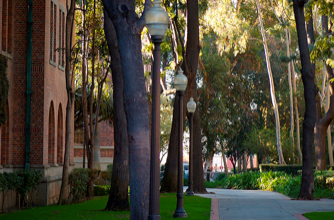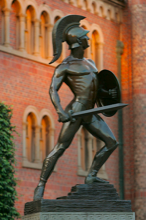Our group studies how the process of DNA replication is linked to overall genome stability and chromosome function during the fission yeast cell cycle and in meiosis.
Our work has centered on a family of proteins called MCM proteins, and their regulators. These proteins are found in all eukaryotes and even in archaea, making them a very ancient, and very important, component of cell division control. MCM proteins are essential for normal DNA replication and cell division. We have used the MCMs as a starting point to investigate a variety of activities related to genome stability in S phase, including the role of the MCMs in maintaining genome stability; the many functions of the DDK kinase Hsk1 and its partner Dfp1; mechanisms that replication and repair different parts of the genome (e.g., heterochromatin) or at different times (e.g., meiosis).
You can read more about MCMs and our specific work on the research section of this website; check out the fission yeast section for background to these problems and this organism.
Interested in our research? Check out the Research Opportunities page for information about undergraduate, graduate, and postdoctoral study.

Our research is conducted in a beautiful, state of the art building , Ray R Irani Hall, at the University of Southern California (USC) in Los Angeles. We are lucky to have a large lab, well outfitted for yeast genetics, with a dedicated imaging suite with a Deltavision Core Deconvolution Microscope. Our group is part of the Molecular & Computational Biology Section in the Dept of Biological Sciences in the Dornsife College of Letters, Arts and Sciences (the “College”). We like to think our move to Los Angeles has left a lasting impression on the city.

About USC
Founded in 1880, USC is the oldest independent teaching and research university in the Western US–and the largest private employer in Los Angeles! (Check out the factbook for more information). It is a private university, not to be confused with the State-run University of California system. The 30,000 students at USC are about equally divided between graduate and undergraduate scholars. The College is located at the University Park Campus just south of downtown Los Angeles and right next to historic Exposition Park. Want to check out the weather in LA today? Visit Tommy Cam: : the camera with the view of the statue nicknamed “Tommy Trojan” in the center of campus. Here’s a trivium for you: it’s a popular misconception that Tommy is the University mascot. Although the sports teams are called “The Trojans”, the mascot is actually Tommy’s white horse, known as Traveller.

The University has a vibrant intellectual and cultural life with stellar reputations not only in medicine and research, but in diverse other areas including, but not limited to film, law, architecture, public policy, and fine arts. In addition to the College, there are also numerous professional schools at USC including the Keck School of Medicine. Sports fans know that the USC Trojans are a powerhouse in college athletics, especially in football. USC alumni are an accomplished lot known for their fierce loyalty. Los Angeles, the second largest city in the country, is a vibrant, sprawling metropolis. From USC, we can just see the famous HOLLYWOOD sign. Though no one in the lab has been discovered yet.

Our lab started out at The Salk Institute in La Jolla, CA , about 120 miles south of Los Angeles in La Jolla, a district of the city of San Diego. We were there from 1993 to 2004.
